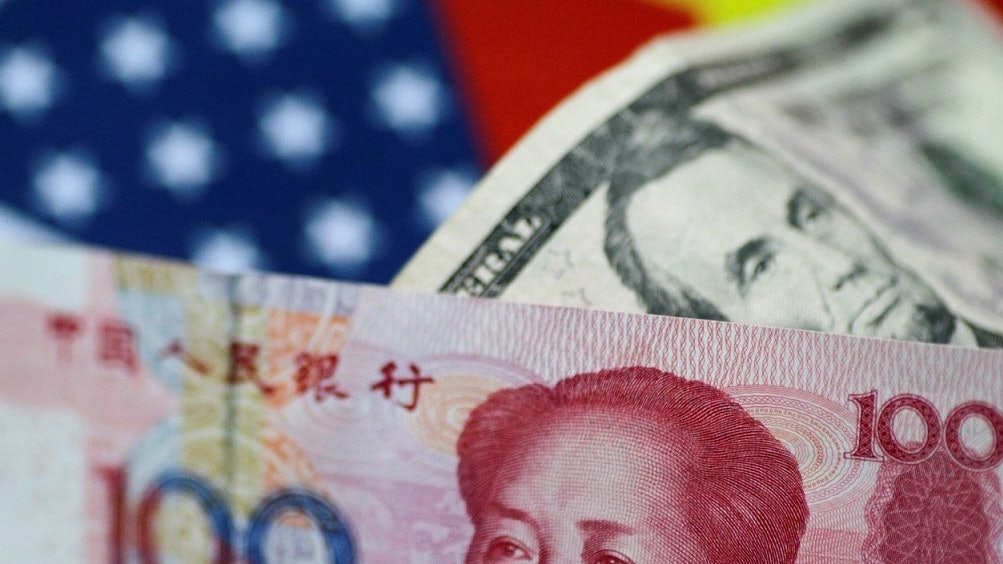On August 5, the US dollar against the RMB FOB finally broke “7” and rose to 7.11, the highest point since the financial turmoil. With Trump accusing China of manipulating the exchange rate on Twitter, Treasury Secretary Steven Mnuchin announced on the same day that China was listed as a “currency manipulator.”
But before recalling the G20 summit in June, Trump still said that “tariffs are killing China, production lines and funds are being withdrawn from China.” He should be happy to deal with the “crash” of the RMB exchange rate. Why do you want to make a big stick? What about China?
Similar to Trump’s earlier understanding, many public opinion regard the decline of the RMB exchange rate as a decline in China’s economy, and foreign investment does not trust China’s signal. From January to May this year, the actual use of foreign capital in China reached RMB 369.1 billion, a year-on-year increase of 6.8%. Among them, German investment in China increased by nearly 101%, even if US investment in China increased by 7.5%, reflecting that foreign capital did not affect China. Losing confidence, Trump’s mouth “the funds are withdrawing from China” seems unfair.
Although “Breaking 7” has quickly become a topic in China, the official response has been calm. The central bank mentioned at the press conference this morning that “breaking 7 is not a dam, but it is only one of the reservoir’s water levels. It has risen and fallen.” In July this year, Zhou Xiaochuan, the 16-year central bank governor, said: “For some people. In fact, the 7-digit figure is more intense, but you don’t have to pay too much attention. It means that using “7 counts” as the bottom line may reflect allergies. In fact, affected by the US interest rate cut, Asian currencies naturally flocked to the United States, and the exchange rate has fallen across the board since last month. The South Korean won fell 2.43% in July and the Singapore dollar also fell 1.23%. The renminbi is not an orphan. Trump’s decision to add $300 billion in Chinese goods earlier is not the only factor that depreciates the renminbi.
How does Huafu think about the renminbi?
White House economic adviser Navarro said in an interview on August 4 that only when China accepts seven conditions will the trade war be terminated. Including the cliché of stopping compulsory technology transfer and technology theft, stopping dumping and subsidizing state-owned enterprises, of course, including “stopping the manipulation of the exchange rate.” What is puzzling is that in the eyes of Trump, the decline of the RMB exchange rate is the result of Beijing’s self-defeating and does not accept the “armistic conditions” set up by the United States; why is the fall of the exchange rate caused by the government’s manipulation of the exchange rate in Navarro’s mouth.
In fact, since the Chinese accession to the WTO, the US political circles have accused Beijing of manipulating the exchange rate. Since 2007, the RMB exchange rate has become the core issue of Sino-US relations. The US government has repeatedly considered China as a “currency manipulator” under the pressure of Congress, but in the end it has not detonated the bombs. The US strategic economic dialogue mechanism has continued for more than ten years. It is undeniable that China was similar to Japan in the 1980s and it was still an export-oriented country. If the renminbi remained low, it would indeed contribute to economic development. But now that exports account for only half of China’s economy in 2006, with a large increase in import demand, there is no incentive to manipulate the RMB exchange rate.
Paying for the price
In fact, the trade war between China and the United States has been in the past two years and should be familiar with the other side. Beijing is often willing to make concessions on “the problem that money can solve.” In the past, it should also purchase US agricultural products and technology products. However, issues related to China’s development model, such as industrial subsidies and intellectual property policies, are very strong. The US is accustomed to shouting all the conditions at once, asking for the price in the sky; in the process of negotiation, it will retreat step by step and pay back the money. In other words, both China and the United States are well aware that some of the conditions proposed by the US have not been realized at all. Otherwise, the two sides will not even have the basis for negotiations. Navarro’s statement “Stop the manipulation of the RMB exchange rate” is an example of this, but it is a “false chip” in the negotiations.
“Fake chips” is not without any effect. On the one hand, a large number of trade union groups in the United States still lobby the government and the Congress every year to include China in the list of “currency manipulators”; in the “100-day plan” of Trump’s 2016 election, it also announced that it will be within 100 days of going to power. China is listed as a currency manipulator. Such negotiations require “export to domestic sales” to become a certificate that the Trump administration attaches to workers and obtain votes in the latter group. On the other hand, as Navarro has done now, when the Sino-US negotiations fail, the Trump administration can also use these “impossible conditions” as a shield to accuse Beijing of insufficient concessions.
In fact, Washington’s “the price of the sky” is far more than the exchange rate issue. Regardless of the earlier it was sent out, it was required to set up a monitoring office in China to “supervise the agreement implementation” of the “dispute settlement mechanism.” Or “institutional reforms” that require China to stop industrial policy earlier seems to be the case. After all, without them, the Sino-US negotiations have not continued until now.












